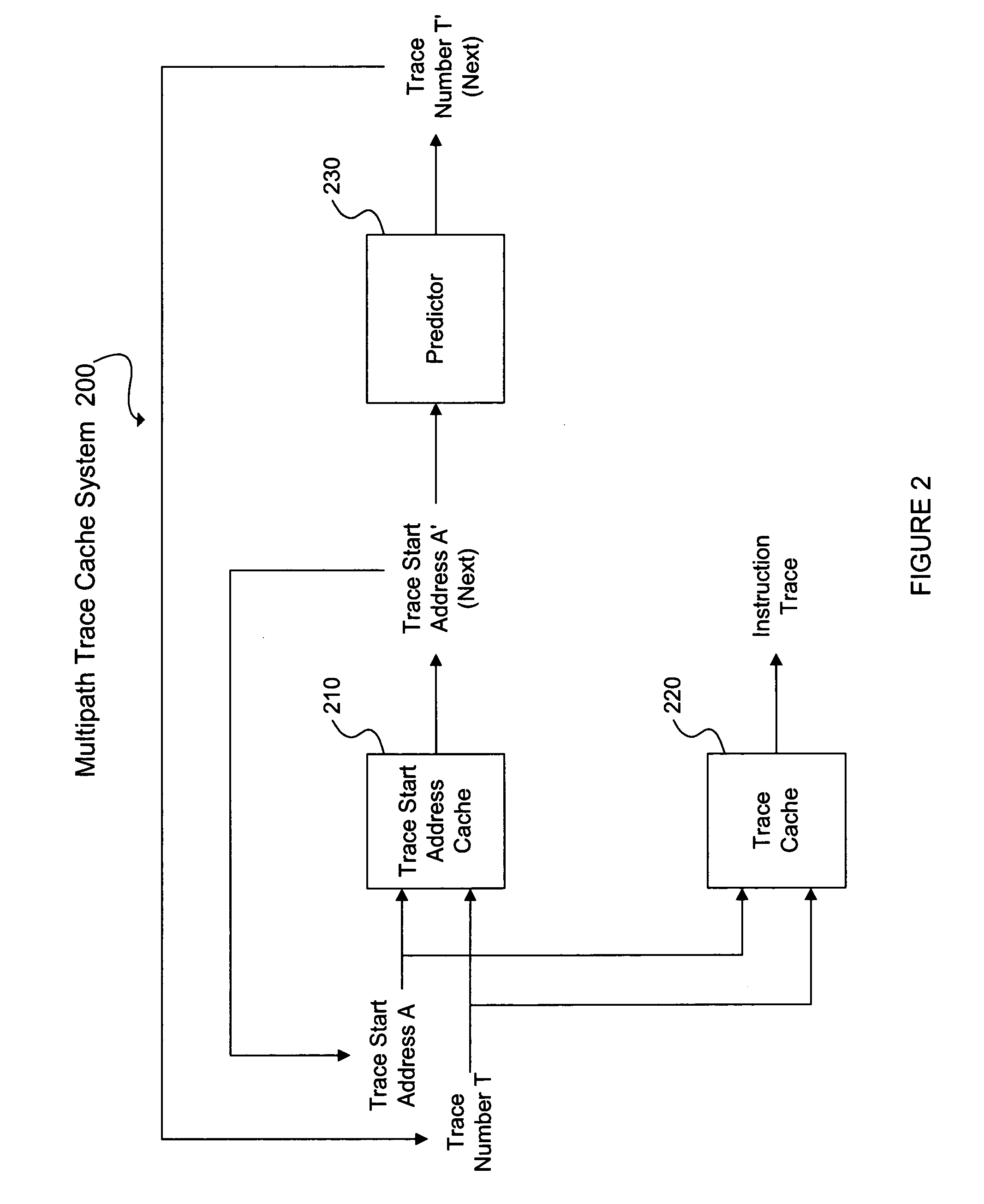Mechanism and method for two level adaptive trace prediction
- Summary
- Abstract
- Description
- Claims
- Application Information
AI Technical Summary
Problems solved by technology
Method used
Image
Examples
Embodiment Construction
[0020] An exemplary embodiment of the present invention allows multiple traces to exist beginning at a particular instruction address and chooses or predicts among them. To enable prediction, the system includes three caches. There is a trace start address cache for providing TSAs, a first auxiliary cache for providing sequences of branch target addresses and a second auxiliary cache for providing sequences of correct or actual branch target addresses. There is also a trace history table (THT) where the entries are histories of traces executed.
[0021] The amount of trace history required is independent of the number of branches in the trace. The number of bits necessary to specify a trace is independent of the number of branches in a trace.
[0022] An exemplary embodiment of the present invention tracks predictions for multiple trace starting addresses and uses a two-level adaptive technique for predicting traces. With the multiple trace scheme, only one of the traces beginning at an...
PUM
 Login to View More
Login to View More Abstract
Description
Claims
Application Information
 Login to View More
Login to View More - R&D
- Intellectual Property
- Life Sciences
- Materials
- Tech Scout
- Unparalleled Data Quality
- Higher Quality Content
- 60% Fewer Hallucinations
Browse by: Latest US Patents, China's latest patents, Technical Efficacy Thesaurus, Application Domain, Technology Topic, Popular Technical Reports.
© 2025 PatSnap. All rights reserved.Legal|Privacy policy|Modern Slavery Act Transparency Statement|Sitemap|About US| Contact US: help@patsnap.com



